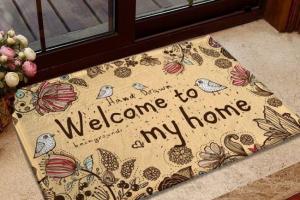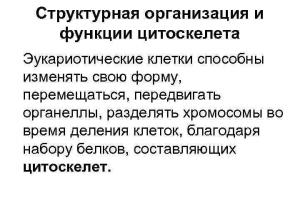Structural paint- This finishing material, which in Lately is gaining popularity when performing repairs. This happens for the reason that the application of the composition is quite simple and does not require the master to have professional skills. However, before starting work, it is still worth familiarizing yourself with some of the nuances of the technology.
Types of structural paint
Structural paint is also called textured paint. Use it at the final stage finishing works. Application can be carried out on almost any surface, namely:
- wood;
- brickwork;
- concrete cladding.
There is no need to prepare the surface using special technology. Any novice master will be able to understand the nuances of working with the material. This type of finish can be classified according to the type of filler. Thus, on sale you can find mixtures with the following fillers:
- mineral;
- silicate;
- silicone;
- acrylic.
The first type of mixture is dry, using lime and cement as the base. Dilution should be done with water to the desired consistency. This material is excellent for exterior finishing walls Silicone compounds are more practical than the first ones, because among their ingredients there are silicone resins.
Silicate fillers are the most expensive. They are applied to mineral surfaces and silicate primer. Acrylic binder provides higher wear resistance to external factors. No dilution is required, the mixture is completely ready for use. The composition can be applied to any surface.

Additional classification
Structural paint is available for sale in several varieties, including:
- misuri;
- Marseilles wax;
- relief.
The first variety is distinguished by the fact that it contains modified starch. The main advantage is the ability to create textured smooth surface. Marseilles wax is excellent for simulating cork, bark and stone. It is characterized by increased moisture resistance and easy care. The main condition for application is the need for protective coating in the form of wax. This type of paint is suitable for wall decoration public places and residential premises.
Structural paint is also offered for sale in the form of relief. This composition is a type of acrylic polymer. Among the ingredients there is quartz chips. Sometimes other natural fillers are added to the components during the production process. Using relief, you can create interesting textures with different effects. The mixture is easy to apply.

Preparation before applying paint
Structural façade paint must be applied after surface preparation. True, there is no need to level the walls to perfect condition. However, if they are very crooked, then you cannot do without plaster. Once this layer is dry, you can begin applying the primer.
It is a concrete contact. The primer is applied in an even layer using a roller; smudges should not be allowed, as well as accumulation of the composition in certain areas. You can start painting only after the surface has completely dried, which usually takes about 24 hours.

Application methods
As soon as the base is diluted with color, you can begin the process. Application should be carried out using a textured roller with a pattern, which will allow you to obtain the appropriate effect. Repeated painting in this case is unacceptable, which applies to the same area. Otherwise, you will experience a change in shade or pattern.
Textured paint can be applied by roller, sponge, trowel or notched trowel. During the drying period, the paint should not be subjected to mechanical stress or washing. This may lead to blurring of the texture or design.
The process can be carried out with a special sprayer, with which you need to move from bottom to top. In this case, application is carried out in two layers. The texture will be determined by the size of the droplets. In the first layer they should be different from those in the second. However, this option cannot be called economical; in addition, it requires special skill, which is especially true if you have to paint an extended surface.
Before purchasing structural paint for walls, you need to pay attention to the fact that it may already have its own pattern. In this case, application should be carried out, for example, using a spatula, if we are talking about the “bark beetle” pattern. The tool must have a Teflon coating. Application to external surfaces can be carried out in calm, dry weather. For successful painting interior walls drafts must be avoided. For works temperature regime should be between +20 and +30 °C. Painting with structural paint may involve pouring a special varnish into the depressions of the pattern, this will achieve an aging effect.

When applying paint, it is important to avoid exposure of the walls to direct sun rays. It is necessary to begin work only after the primer has dried. If you choose a spatula, then you need to use it to give the wall the necessary pattern, additionally using a brush, trowel or roller.
Smearing should be carried out with longitudinal movements, then you can move on to transverse ones. In order to achieve a more effective pattern, you need to stock up on special combs or graters. For small patterns, brushes or a roller are used, which should first be soaked in water.
When applying structural paint, it is important to remember that it will begin to set within half an hour, so it is important to create the design during this time. The period of complete drying can reach 12 days. After this time, the surface can be subjected to stress and washing.

Working with structural paint may involve adding some sand to the composition, if the manufacturer allows it. In this case, the surface may become rough. However, to begin with, the composition is tinted, it is thoroughly mixed, and the amount of pigment can vary depending on the desired shade.
After preparing the paint, a small amount of the mixture must be applied to a spatula and rubbed over the surface. Some craftsmen compare the technology with conventional putty. Next, the structural roller is moistened with water, and then it should be rolled over the treated surface. It is better to work together, then one master will apply the composition, and the second will add structure using a roller.
You can use not only a roller, but also a stencil to create texture. To achieve the effect of a scratched surface, you can use a comb. Most simple method However, you will still need to use a roller. To prevent color differences on one wall, the surface is finished from one corner to another in one pass. After two days, the base can be treated with acrylic enamel, varnish or decorative wax.

Paint for plastic
Structural paint for plastic is also available on sale today. It is necessary for repairing the car interior, exterior mirror boxes, bumpers and moldings, which may lose their appearance during operation. If products and elements have lost their original structure, the surface can be made rough again, hiding small defects.
Structural painting does not require specific skills, so the work can be done even at home. The paint allows you to create a durable coating that is resistant to mechanical and atmospheric influences. The composition adheres well to surfaces different types, the only exception is polyethylene.
Why choose this paint?
The mixture dries well, so the overall painting time is reduced. The mixture is left to dry for only 5 minutes between layers. No varnish is required after painting. Modern structural paint for bumpers is so diverse that it allows you to choose the required grain size and color scheme. It is sold in cylinders or jars. But to work with spray paint very simple. To obtain the desired result, the product must be prepared. The final result will depend on how seriously you approach this stage.
Preparation before applying bumper paint
Before applying paint to create texture on the bumper, the surface must be prepared. To do this, the product is cleaned with sandpaper, then putty is applied to its base. After drying, its excess must be sanded off. Using a napkin, the master will have to remove any remaining dirt and dust.
The surface is then degreased with a solvent. At the next stage, you can start priming. If you plan to use a structural composition when painting, then you can refuse priming, because the composition already contains elasticizers and plasticizers. If you decide to prime the surface, then after this layer has dried, the primer should be washed off, and the surface should be matted. Once the base has become matte, the product can be considered ready for painting.
If you are using an aerosol, shake the can well for two minutes. Only after this, from a distance of 30 cm, can the composition be sprayed in a thin layer onto the surface. After 5 minutes, you can apply a second coat. Structural paint is applied in several thin layers. Their minimum number is three. After completing the work, the product should be left to dry for several hours. It is important to ensure the temperature ranges from 18 to 20 °C.
Conclusion
By using paint that allows you to form a structural surface, you can get a durable base. This approach to finishing the premises is also good because you can carry out the work yourself, without the help of specialists.
In addition, this allows you to save additional money. Using this composition, you can create unique effects that are difficult to achieve using other materials. If you don't want repeating patterns, you can use unique stencils.
When decorating the interior of a house, you can create not just smooth painted walls, but a beautiful relief surface using textured paint. This look will greatly transform the interior and add original details to it. Next, we will consider the types of textured paint for walls, the features of its selection and application.

What it is?
Textured paint is a thick, viscous mass of high density based on acrylic and polymer components. Substances are often added to the composition, which, when applied, seem to scratch the layer and form a beautiful relief surface. This can be quartz sand, granite or marble chips of the finest grain size, crushed gas silicate, polymer fibers. To give greater thickness, modified starch is added to textured paint.


Various types of textured paint are used for exterior and interior works, for facade cladding, finishing walls and ceilings. In fact, This finishing material combines two functions at once - paint and decorative putty. Therefore, repairs are reduced by at least half. Most brands have ingredients that allow a thick layer to dry quickly within 1-2 hours of application, so you won't have to wait long.

In addition, high-quality types of textured paint have the following advantages:
- do not contain acetone or other solvents, so no persistent pungent odor appears during work;
- created on the basis of harmless components, they are safe and do not corrode the skin if they come into contact with your hands;
- quite resistant to damage and durable;
- fill when applied small cracks and cracks, leveling the surface;
- resistant to moisture, temperature changes, fungus and bacteria;
- vapor-permeable, so air will circulate in the room after renovation;
- these materials are fireproof.

Before deciding to decorate the walls in a room with textured paint, it is worth remembering some of its disadvantages:
- thick layers require a lot of material consumption;
- If you need to repaint a section of the wall, then old layer needs to be deleted.


Despite these disadvantages, such paint is very practical and very popular when carrying out modern renovation. Its main advantage for beginners is its ease of application. The process is clear and easy, not requiring complex construction tools. Many people are also pleased with the advantage that the walls do not need to be puttied before painting.

What is the difference?
In its consistency, textured paint is much thicker than conventional types used for exterior and interior decoration: enamel, oil, acrylic. Therefore, when working with it you will have to use slightly different tools and application methods. The structural component is also different: if you traditional types paints the main task- to make the wall smooth, then with the help of a textured one, on the contrary, they achieve a relief surface.


Textured paints, unlike other types, may contain fine-grained insoluble elements, which, when applied, give waves, roughness or other volumetric effect. The components of these brands are extremely diverse - from natural sand to complex polymers.
Unlike other types of painting materials, textured paint does not require leveling the surface with base and finishing putty before application. There is no need for perfectly smooth, zero-point walls, and this also simplifies the work.
Applying different types of textured paint requires more than just a roller or brush; other tools may be needed.

Types and characteristics
Several dozen types of textured paint are used for interior wall decoration. They differ in ingredients, purpose, shades and types of textures.

First, it’s worth considering the most common textures of these materials:
- "Mizuri"– made on the basis of modified starch and acrylic fillers. With it you can create smooth or textured surfaces with smooth curved waves. Thanks to pigments, you can get different shades; when dry, the surface has a characteristic glossy shine. Distinctive feature This paint is that it is applied mainly by hand.

- "Marseille wax"– paint based on artificial wax fillers. After drying, it has the appearance of an aged stone with dark and light areas, the surface becomes shiny. This variety provides good protection against moisture and fumes. Used for various rooms, the stone effect can add sophistication and nobility to the interior.
- Decorative paint "wet silk" It contains cellulose or cotton fibers and coloring polymer pigments that give different shades. The painted surface will not have such a voluminous relief as “Mizuri”, but its appearance will be very impressive. Various brands of “wet silk” with a velvet or velor effect will bring a chic atmosphere to the interior; under the influence of light, the patterns will shimmer like silk threads and change their shade at different angles.


- Type of textured paint "Atacama" contains quartz sand, which gives the effect of a rough surface. Special fillers give a cold metallic shine, creating the feeling that the wall is covered with an old mirror or steel sheet, the look is very original and impressive.
- Texture "shagreen" imitates uneven paint finishes on concrete, metal or plaster. It looks like an orange peel or sandpaper. Depending on the components, “craters” on the surface can be from hundredths to several millimeters wide.


- Type of textures "relief" with solid particles can have a variety of effects: cracking, smudges, waves, bark beetles and others. To create the desired texture for paint, certain application methods are used. “Relief” can be monochromatic or have several shades.
- Silk plaster or liquid wallpaper- This is a material for interior decoration. The composition contains cellulose fibers and polymers, which give a special velvet effect on the wall. Mainly light shades are used.


Textured paints can also be used for exterior work: for the facade of a building and small architectural forms. They must be waterproof and frost-resistant. To do this, you should look at the packaging in advance; water-dispersed and façade brands are suitable. In addition, there are universal types suitable for both external and internal work.
Depending on the base, textured paints can be as follows:
- Acrylic types have high ductility, made from water based without solvents. Their advantage is that they are harmless, odorless, and can be used both at home and outdoors. Disadvantages include poor protection from sunlight.
- Vinyl paints, having protection from external influences, they are widely used for facade work. Due to their high plasticity, it is difficult to obtain a three-dimensional texture from them. Grips well on any surface.


- Silicate species contain liquid glass, due to which, when dried, they form protective film. Therefore, they are widely used in exterior decoration. Among the disadvantages, it is worth noting the high consumption.
- Silicone paints used for external and internal work. Very flexible and resistant.
- Mineral textured paints cement-based, moisture-resistant and vapor-permeable, but sensitive to temperature changes. Therefore, they are not recommended for outdoor use.


Any type of the described varieties for interior or exterior decoration has many texture options and a varied palette; the choice depends only on the tastes of the owner.
Color palette
Relief types and “Mizuri” have a large range of basic shades - from white to dark burgundy. “Marseille wax” can be beige, brown, or wood-like. The texture of the surface treated with Atacama paint can have a noble metallic sheen of gold or silver. Shagreen textures can be silvery black or light. Wet silk paint has a rich palette of colors: green, burgundy, dark blue, brown and others.

Review of manufacturers
Manufacturer Amourcolor produces high quality textured paints that are wear-resistant. Buyers are provided with 3 product options: Tactite with a suede surface or mosaic, Perlata with a pearl sheen and Escenta with a variety of undertones. All paints are water-based and environmentally friendly.

Domestic manufacturer "Lakra" offers paints with various textures: relief, “Mizuri”, “wet silk” and others. All products of high quality can be purchased at a competitive price.

Russian company VGT has been producing paint and varnish products since 1992. There is an opportunity to purchase different kinds textured paints: facade and interior, water-based, crack-resistant.

The product is ideal for our climate. There are a lot of positive reviews about it. In the video below you can watch a master class from the manufacturer "VGT" on applying textured paint with the "Travertine" effect.
Manufacturer from France Blanccolor supplies many types of resistant materials for decorative finishing walls Among them are translucent paint Essuyables, silk based on cellulose fibers Tradimurs, waxed plaster effect Effets Platre Cires and many other types.

Textured paints from the manufacturer Clavel They have a variety of colors and perfectly imitate silk, brocade, and velvet on the walls. There are different types of designs ranging from antique to modern. The composition uses environmentally friendly components.

What to consider when choosing?
For a bedroom, living room or hall, it would be good to choose textured paint like velvet or silk; the choice depends on other interior details and the preferences of the owners. For the ceiling of a living room in an apartment, you should use types that are not too prominent, preferably light colors.


In rooms with high humidity, for the bathroom it is worth choosing waterproof or water-dispersible paint. In the kitchen, where there is a high probability of contamination, a washable type of such coatings will be relevant.
For facade work, you need to buy appropriate brands that are resistant to adverse weather conditions. Acrylic that fades in the sun should not be used, but it is better to choose vinyl varieties.
Subtleties of application
Do the finishing correctly with your own hands using of this material will not be difficult. Even beginners in the construction business can carry out this work. A wall that needs to be coated with textured paint does not need perfect finishing putty, but large unevenness and cracks will have to be eliminated. For this you can use cement mortar or epoxy putty. After this, the surface is cleaned of dust and primed with a deep penetration acrylic primer.
It is best to work with rubber or rubberized gloves. Despite the fact that most textured paints do not have a harmful effect on the skin, it will not be a bad idea to protect your hands. Before painting, you need to protect the floors and furniture from contamination, for example, cover them with plastic film.


Interior paint for interior spaces applied to walls in several ways.
A terry roller with thick pile is the most common tool for ordinary paints; it is also convenient for applying textured, not too thick compositions.
For ease of work, so as not to build a stepladder, you can put it on a long fishing rod, which is sold in construction stores. It is quite enough for the height of a standard city apartment.
That's all today larger number When decorating facades or walls from the inside of a room, people prefer to use various types decorative paint. One of them is structural, or, as it is also called, textured paint. As the name implies, there is a certain texture, relief and even patterns on the surface. All this allows you to use such paint as an alternative to decorative plaster, creating similar effects with less work.
In general, there are no big differences in terms of composition with conventional paints. One of the few differences that makes structural paint so attractive is the filler. The latter is decisive in appearance applied paint coating.
Types of structural painting
First of all, paint differs according to the types of fillers. On this moment There are four options here:
- Mineral filler. The latter is lime or cement. The composition is sold dry and diluted with water to the consistency required for use. Mainly used in exterior work, such as facade finishing;
- Acrylic filler. Sold ready for use and distinguished by its ability to adhere firmly to any surface;
- Silicate filler. Mainly used for finishing mineral surfaces such as brick and concrete. Before use, it is necessary to finish the surface with a silicate primer. The price is superior to other options;
- Silicone filler. Silicone resins make this composition practical. It is easy to apply and use.
In addition, textured paint differs among the finished products on the market:
- Marseille wax. The paint imitates the relief of stone, cork or bark. Suitable for use in both residential and public spaces. After application, it is necessary to cover it with wax, which provides the composition with its proprietary moisture resistance;
- Relief. Silicone composition with quartz chips or other natural materials. Applicable on most different surfaces, allowing you to achieve various visual effects. When applying, you can use a textured roller and other tools. In general, the work is quite simple;
- Mizuri. Unlike the embossed options described above, this method, on the contrary, implies a smooth surface. The main difference is that the composition contains modified starch.

Advantages of structural paint
- Lat design possibilities. The base of this paint is usually white, which means that it can be tinted with the most different ways. As a result, you can get a spectacular relief wall without the need to cover it with decorative plaster;
Important! If it is necessary to change the color on an already painted surface, this can be done using ordinary acrylic paint.
- Vapor permeability. You can paint walls in which this parameter is at a high level and not be afraid that the layer of paint will retard the natural air exchange in the wall;
- The opportunity not to waste time and money on perfectly preparing the wall for painting. Structural paint is quite dense and can be applied in a fairly thick layer. This makes it possible to mask the unevenness of the surface being painted, if they are not too large;
- High moisture resistance. This quality makes it possible to use paint in places with high level humidity, and also successfully remove dirt from the painted surface. The surface does not absorb water, which means that dirt also does not eat into it;
- Suitable for external use. Textured paint is resistant to external influences, ultraviolet radiation and temperature changes;
- Completely environmentally friendly. The paint does not contain harmful substances, and they are not released into the atmosphere under any conditions. Moreover, the composition is hypoallergenic.
Flaws
Some serious ones technical deficiencies This paint does not have it. And the only negative can be considered the rather high price. However, for a composition intended for use in designer renovations and designed to achieve a certain visual effect, the high cost is not such a serious disadvantage. In addition, when working with paint, unlike decorative plaster, it is quite possible to handle it on your own.

Structural paint tinting
Since this product comes in white, you may need to give it a specific shade. This is usually done at the point of purchase or at color centers, but if necessary, you can do it yourself. To do this, first try painting a test amount of paint and apply it to a non-critical surface. Remember that the paint will darken slightly after drying. Therefore, you need to use the desired proportions only after such a color check.
Having calculated the required proportions, pour the color into the paint, constantly stirring the composition. If there are no strict rules for the shade, then you can simply gradually pour out the color until the desired shade is achieved.
Step-by-step instructions for painting walls with structural paint
- Preparing the walls. In this case, there are no differences with other types of painting - we all also need to clean the walls and make sure the base is strong. Wherein perfect alignment, as we said above, is not required. To ensure the best adhesion, the walls should be coated with a primer;
- Work must be carried out at temperatures from 20 to 30 degrees Celsius with low humidity levels. If the work is outdoors, then the weather should be calm. At the same time, study the additional requirements for the conditions on the packaging;
- The choice of tool for painting and creating texture depends on the volume of work, the shape of the surface and the desired pattern. This could be a brush, a comb, or textured roller(like a regular one), and even a spray gun. You can move the brush in different directions, achieving different directions and patterns. When using a roller, the final pattern depends on the type of coat and the length of the fibers. Good results when applying structural paint, a regular sponge shows. And even a spatula is suitable for this role;
- Some types of paint already have their own structure, so subsequent processing is not required.
Important! The pattern is created on a freshly applied layer of paint. At the same time, you can give free rein to your imagination by combining different types of tools, patterns and degrees of pressure. The only thing is that you cannot push the paint layer all the way through so that the surface being painted does not show through. To do this, the layer itself should not be made too thin, since in this case creating a pattern will be problematic.
If your walls are not level enough and you don’t have the desire or time to level them, you can decorate them with special paint, which creates a relief on the surface. We will tell you about its features, as well as how structural paint for walls is applied - with a roller or some other device - on this page.
Do not think that this paint is intended solely to hide minor defects. This is a fairly popular finishing material with interesting decorative properties, increasingly being used in residential buildings and apartments (see).
Properties and characteristics
Depending on the composition, structural (textured) paint can be used both for finishing interior walls and facades.
It has such positive characteristics as:
- Environmental Safety, harmlessness to others;
- Density and elasticity, due to which minor defects on the surface of the walls are hidden and become invisible;
- High degree of vapor permeability;
- Moisture resistance, sunlight and mechanical damage;
- Possibility of introducing pigment to give the composition the desired color;

- Possibility of painting already finished surfaces in a different color with acrylic paints;
- Easy to apply and create any relief with your own hands.
Application area
Since structural paint is highly resistant to weathering, it is often used to decorate new or repair old facades, making them attractive in appearance. The surfaces painted with it are very similar to decorative textured plaster.
These same properties, as well as the absence of harmful substances and long term services allow the material to be used for interior work. It is very practical for kitchens, corridors, loggias, but will also look great in the living room.
Only the high price can force one to refuse to use it. But it is significantly compensated by the lack of costs for thorough preparation of the walls and the possibility of applying just one layer.
How to paint walls with textured paint
The technology includes two stages: preparation of the base and application to create texture. The process is not complicated and is absolutely accessible to everyone.
Preparation
A lot of articles have been written on this resource about preparing surfaces for painting, so we won’t do this in detail again. Moreover, it is not necessary to level them to perfect condition under structural paint: it itself will perfectly hide all small potholes and cracks.

Large cracks, potholes and joints need to be sealed in any case
Note! The main thing is that the base is strong, does not crumble and does not have obvious differences in the plane. A primer is used to strengthen it.
But it’s worth talking about preparing paint and tools.
As for the decorative covering, then keep the following in mind:
- Structural paint is available only in the basic white color;
- To get the desired shade, you need to add a certain amount of color to it;
- If it is not possible to tint the composition using special mixers with dispensers (they are available in large construction stores, the service is provided free of charge if you purchase paint on site), this can be done manually;
- To do this, a small amount of pigment is introduced into the mass and it is mixed until an even color is obtained. If the shade is not saturated enough, the operation is repeated until the desired result, thoroughly mixing the paint each time;

- Before starting work, the instructions recommend doing a test paint job and making sure that the color suits you.
Advice. After drying, the paint fades slightly and becomes lighter than in its original state, so you should immediately make the color a little darker than necessary.
As for the application tools, their choice depends on what kind of texture you want to get. This can be a spray gun (see Choosing a spray gun: different types of devices), a brush, a roller with a regular or structured coat, a sponge, or a spatula. Additionally, you can use other devices, for example, a comb.
Ways to create relief
The structure of the surface will largely depend on the composition of the paint, or more precisely, on the type and size of the filler it contains. Therefore, you need to choose it carefully, paying attention to the samples. But you yourself can change the relief, make it deeper or more artistic, if you use one of the listed methods.
- Brush. If you want to get an interesting texture, you need to apply structural paint with a brush not as usual, but in large strokes. They can be parallel, cross or chaotic - anything depending on your imagination and dexterity. If not everything works out, you can first coat the wall with paint in an even layer, and then use the same or a harder brush to “stir” the coating.

In this case, the paint was applied with a brush in a vertical direction and then smeared in a horizontal direction.
- Roller (see). The relief of the future surface dictates the type of fur coat. The picture below shows a clear difference between the use of foam rubber and long-pile fur coats. Or you can take a structural roller for painting walls and walk it over the surface after applying an even layer of paint. But it shouldn't be very thin.


- Sponge. Somewhat longer, but still possible way applying structural paint. Using a sponge soaked in the composition, “smacking” movements are made on the wall. The higher its porosity, the more prominent and interesting the texture. In construction stores you can find special sponges for this purpose - natural sea sponges.

- Putty knife. Structural paint has a rather thick and viscous texture; it can be applied with a spatula, like decorative plaster. At the same time, you should not smooth it out, trying not to leave grooves, but, on the contrary, use strokes of different lengths and directions. The relief will depend on the size and stiffness of the spatula, as well as on your skill.

This photo shows a wall “painted” with a plastic wallpaper spatula.
Without enough practice, any of these methods may seem difficult to do on your own. In this case, you need to take an assistant and act like this: one person applies paint to the wall in any convenient way (roller, brush, spray gun), simply trying to make a layer of the same thickness, and the second person then “paints” it with the tools described above.
You can paint on a freshly painted surface with any other equipment: a notched spatula, a comb, a crumpled plastic bag and just with your fingers.

But you need to try not to push the fresh coating to the base so that it does not show through deep scratches. Although if the walls are pre-painted regular paint, it can look very impressive.
Conclusion
Structural paint is a very attractive material for those who do their own repairs, as it does not require ideal surface preparation and allows you to experiment with texture without fear of ruining the coating. If you can’t apply an even pattern, chaotic grooves, bumps and depressions will also look interesting and certainly unique.
Watch the video in this article and you will understand that you are quite capable of this type of wall decoration.
One of the most common options for covering walls is gluing wallpaper, painting walls, applying putty or plaster. Indeed, such options are available to all of us. However, we want to introduce you to one more. This option is a rather original and attractive coating. That is why we want to tell you a little about textured paint. Only this paint will allow you to create an unusual, fascinating, and most importantly, effect on the surface of the walls that is not harmful to your health.
This material also has hypoallergenic properties, which allows it to be used in children's rooms. Let's take a closer look at everything about structural wall paint. Additionally, we have prepared photos and videos for you.
What is structural paint
Carrying out work with this paint is quite simple and easy. It can be done not only by a well-trained master, but also by those who have little connection with construction work. Also very valuable in this coverage option is that you can create your own unique design and style. In addition, if some defects appear during application, you will have enough time to remove them. And all thanks to the fact that the paint dries slowly. So that you are not afraid to apply the material to the wall, practice on a piece of drywall, plywood, or a small section of the wall. However, remember that if you apply paint to the wall while practicing, it will need to be removed. An iron spatula will help you with this.

What is structural (or textured) paint? First of all, it is a viscous and thick white mass. Although the substance is called paint, it is still more like plaster. Using tools such as a roller, spatula, brush, sponge, etc., the structure of the wall is created.
Advantages of structural paint
Why is this paint so good? Let's look at its advantages:

Important reminder! When painting walls, use textured paint and dye from the same manufacturer. So, you will get high-quality results.
The only downside is the high price. But considering that you are buying high-quality, durable and environmentally friendly material, this does not matter so much.
Structural paint selection
We probably all agree that by applying textured paint to the surface, you will get a noteworthy and unique interior. However, it also happens that after applying the substance, the owners complain that they are dissatisfied with the result, since they expected something completely different. Why does this happen? First of all, because buyers did not fully understand what kind of purchase they should have made. If they somehow understood the application method, then they could have made a mistake in their choice of purchase.

The interesting thing is that each paint has a special grain structure. If you want to create a deeper and more pronounced texture, then you should choose a coarser grain size. You will find a description of the composition on the packaging, so do not neglect the advice of sellers and consultants.
An important parameter of the texture is the basis:
- Silicone. Quality option coating, which is the most common nowadays. It can be used for both interior and exterior work. After application, it creates a vapor-permeable coating that makes the surface resistant to moisture, temperature changes (helps prevent the pigment from fading in the sun), as well as various aggressive environments.
- Mineral. One of the most budget options, since it is based on cement and lime, and is sold in the form of a dry powder. Often texture composition used on external walls of houses.
- Silicate. A very practical material, although it is one of the most expensive. This coating is not afraid of dirt and dust (since it has dust-repellent properties), it is not afraid of various atmospheric influences, and does not absorb dirt, which makes this composition easy to clean.
- Acrylic structural paint for walls. Is one of the most convenient options textured paints today, since it allows mixing different dyes and shades of paint.

Application of structural paint
Applying a structural substance to the surface does not require much effort and the use of special expensive tools. As you work, you can carry out application not only using the methods that you have seen, but also those that you have come up with for yourself. The main thing is not to overdo it and remember the aesthetic appearance. It is also noteworthy that you do not have to work long to prepare the surface, since the paint is applied in a thick layer, which will allow you to repair all the unevenness, cracks, chips, etc.

The choice of tool depends on what kind of texture you are trying to achieve. For example, you might need:
- sponge;
- comb;
- spatulas of different lengths;
- structural roller of different lengths.

In this video you will see how to apply paint:








